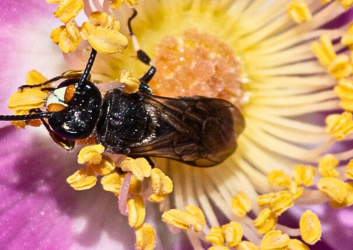Your guide to building a safe campfire
Camping is one of the best ways to immerse yourself in nature, and nothing enhances the experience quite like a cozy campfire. Whether you’re roasting marshmallows, sharing stories or simply enjoying the warmth of the flames, a campfire can create lasting memories.
However, it’s essential to balance enjoying the outdoors and protecting the environment. In this guide, we’ll walk you through steps to safely build, maintain and put out a campfire. We want to ensure you have a great time, while minimizing your impact on nature. So, gather your gear, and let’s get started on creating the perfect campfire experience!

Step 1: Choose the right location
Lucky for you, our campsites include designated fire pits. Designated fire pits...
-
Minimize environmental impact: Our fire pits are set up in areas that will cause the least harm to surrounding plants and soil. Using them helps preserve the natural landscape and reduces the risk of scorching or damaging the ground unnecessarily.
-
Increase safety: Our fire pits are built with materials and in locations that reduce the spread of flames and embers.
-
Reduce cleanup needs: Our fire pits help contain ashes, burnt wood and other debris, making it easier to clean up and leave no trace after camping.
-
Are less likely to disturb wildlife: Animals are less likely to come near fire pits since they’re established, frequently used spots.
Step 2: Bring your fire materials
-
Tinder: Use items like cotton balls and petroleum jelly, dryer lint, char cloth, sawdust or paper products as your fire starter.
-
Kindling: Bring items you may have around the house like cardboard or popsicle sticks to use as your kindling.
-
Firewood: Many of our parks have firewood available for purchase, so you don’t have to worry about buying it before you get there. But just in case they don’t, try to buy your firewood in the same area you plan to stay. Firewood is one of the main culprits for invasive pest transfer – don't give them a free ride. The best way to prevent the spread is to buy your firewood where you plan to burn it.
-
Note: Gathering wood in our campgrounds is prohibited.
Step 3: Build your campfire structure
Here are a few examples of campfire structures to try out next time you are camping:
-
Cone fire
-
Structure: Start with a small cone of kindling around a few handfuls of tinder that are loosely piled in the center of the fire ring. Once the fire is going strong the temperature increases, add larger logs.
-
Best for: Quick warmth and cooking
-
-
Log cabin fire
-
Structure: Stack two logs parallel to each other on the ground, then place two more logs on top in the opposite direction (similar to stacking Jenga blocks). Build several layers in this crisscross pattern, with tinder and kindling in the center.
-
Best for: Long-lasting fire and even heat
-
-
Pyramid fire
-
Structure: Place three to four of your large logs side by side at the base, then turn 90 degrees and add a second layer of slightly smaller logs on top. Continue doing this, going smaller as you go up, finishing the top with kindling and tinder.
-
Best for: A long, steady burn
-
Step 4: Light the fire
Use a match or lighter to ignite the tinder at several points. Blow gently on the base to help grow the flame. Patience is key! Allow the fire to catch before adding larger pieces of wood.

Step 5: Maintain the fire safely
-
Watch the fire: Don’t ever leave the fire unattended. One person should always stay nearby. Remember, if it’s too hot to touch, it’s too hot to leave.
-
Control the fire size: Campfires must be in the designated fire pits and the flame must be no higher than two feet. On ocean beaches, recreational fire must be at least 100 feet from the dunes, no more than four feet wide and four feet high. Park rangers may impose additional restrictions on fires for the health and safety of the park visitors or resources.
-
Keep you, your pets and items safe: Make sure your chairs, pets and all your personal items are kept at a safe distance to prevent accidental burns.
Step 6: Extinguish the fire properly
-
Douse with water: Pour water over the entire fire until ALL the embers are out, not just the red ones. If you don’t have water, stir dirt or sand into the embers with a shovel to bury the fire.
-
Stir and repeat: Stir the ashes to expose any remaining embers, then douse again with water.
-
Check for heat: Hold your hand close to the ashes (without touching). If it feels warm, it needs more water.
A well-built campfire is a safe campfire. By following these steps, you can enjoy the warmth and charm of a fire, while minimizing risks and helping protect the natural spaces we all love.
Originally published December 02, 2024




